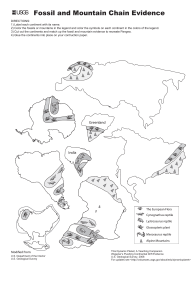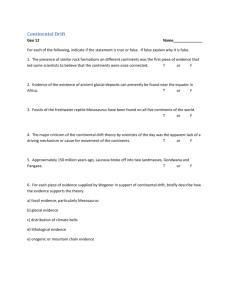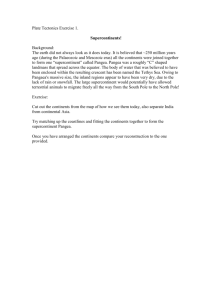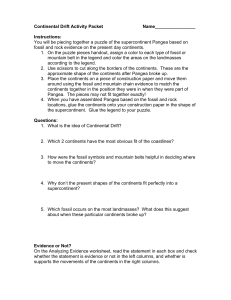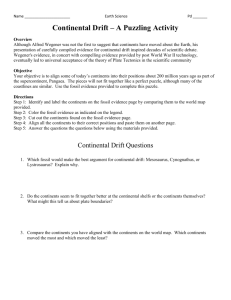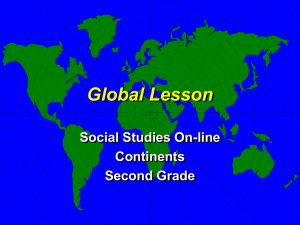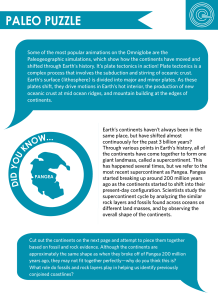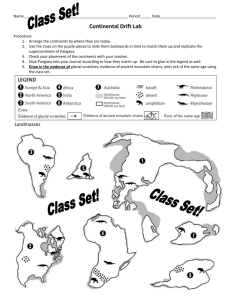Continental Drift Activity: Pangea Worksheet
advertisement
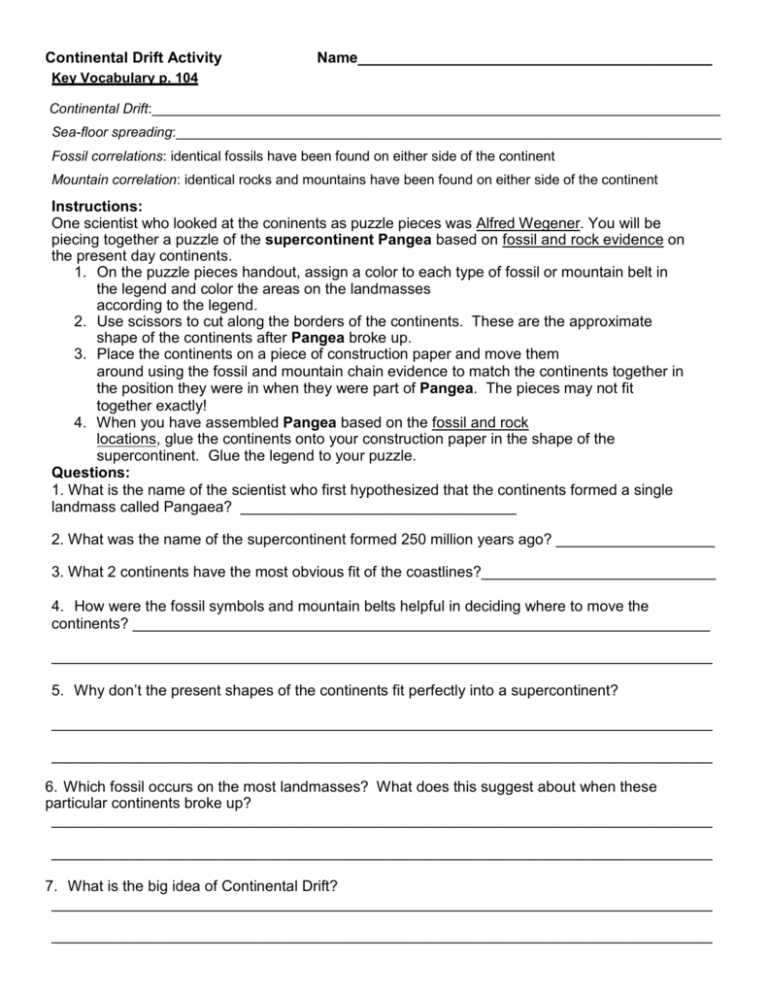
Continental Drift Activity Name__________________________________________ Key Vocabulary p. 104 Continental Drift:__________________________________________________________________________ Sea-floor spreading:_______________________________________________________________________ Fossil correlations: identical fossils have been found on either side of the continent Mountain correlation: identical rocks and mountains have been found on either side of the continent Instructions: One scientist who looked at the coninents as puzzle pieces was Alfred Wegener. You will be piecing together a puzzle of the supercontinent Pangea based on fossil and rock evidence on the present day continents. 1. On the puzzle pieces handout, assign a color to each type of fossil or mountain belt in the legend and color the areas on the landmasses according to the legend. 2. Use scissors to cut along the borders of the continents. These are the approximate shape of the continents after Pangea broke up. 3. Place the continents on a piece of construction paper and move them around using the fossil and mountain chain evidence to match the continents together in the position they were in when they were part of Pangea. The pieces may not fit together exactly! 4. When you have assembled Pangea based on the fossil and rock locations, glue the continents onto your construction paper in the shape of the supercontinent. Glue the legend to your puzzle. Questions: 1. What is the name of the scientist who first hypothesized that the continents formed a single landmass called Pangaea? _________________________________ 2. What was the name of the supercontinent formed 250 million years ago? ___________________ 3. What 2 continents have the most obvious fit of the coastlines?____________________________ 4. How were the fossil symbols and mountain belts helpful in deciding where to move the continents? _____________________________________________________________________ _______________________________________________________________________________ 5. Why don’t the present shapes of the continents fit perfectly into a supercontinent? _______________________________________________________________________________ _______________________________________________________________________________ 6. Which fossil occurs on the most landmasses? What does this suggest about when these particular continents broke up? _______________________________________________________________________________ _______________________________________________________________________________ 7. What is the big idea of Continental Drift? _______________________________________________________________________________ _______________________________________________________________________________ left columns, and whether is supports the movements of the continents in the right column
